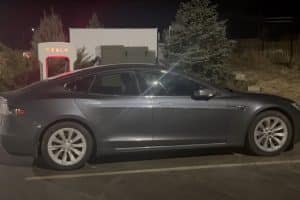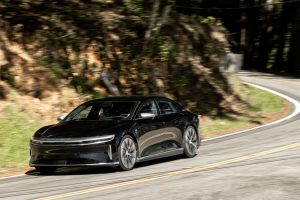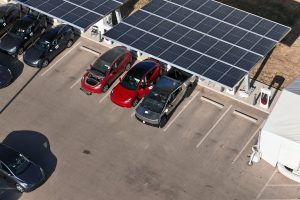There is no shortage of crazy stories coming out of the path of Hurricane Ian. (I’ve got my own from my area of Southwest Florida, but none of them are saucy enough or cleantech enough for an article.) One that is a definite fit for CleanTechnica comes from a Twitter friend, Jeremy Judkins. Jeremy’s house is a little south of me in one of the areas hit hardest by the hurricane, North Port.
Jeremy lives (well, lived) in the last possible evacuation category, Zone E, due to being 35′ above sea level. Unfortunately, he didn’t buy flood insurance due to how high he was. (This ended up being a “500-year” flooding event.) Warning: if you’re sensitive to language, don’t read the following tweet:
With a big solar roof and Tesla Powerwalls, even when others in the area were without electricity, he had plenty — more than he could even store in the Tesla batteries. Therefore, neighbors were using his house as a bit of a hub for air conditioning and phone charging. He didn’t plan to evacuate until something happened with one of those neighbors. “I got a tip that flooding was going to get worse. This water was shallow. I saw my neighbor get picked up by national guard. They know someone in emergency management.”
Seeing that, he decided it was time to get out of there. Hearing that it was a 1½ hour wait to get onto the Interstate near his house, he decided to take a different route. Well, the best thing at this point is to just watch the following video:
Indeed.
Here’s a longer video:
So, yeah, Teslas can drive through floodwaters quite alright. The heavy weight of the skateboard battery platform surely helps. The tremendous Tesla traction control does too. The almost unmatched power of the Tesla Model X Plaid has to come in handy as well. This is not to say a Tesla Model X can drive through any water, but it somewhat backs up Elon Musk’s claim a few months ago that a Tesla can actually act as a boat for a short time. (Whether you can steer a Tesla if it goes into true “boat mode” and loses touch with the ground is another matter, but I’m not going to go test it out in my Model 3.)
Jeremy is now safely north of me and trying to figure out what to do as far as long-term living. It appears that his house has not sustained enormous damage, luckily, but the grid down there is demolished and there is much rebuilding to do before North Port is livable again.
By the way, Jeremy isn’t the only one who drove a Model X through high water to escape the early aftermath of Hurricane Ian. Here’s another Model X owner, this one driving past kayakers (instead of an airboat) on his way out:
Good luck to all of them. This storm is one of the worst to strike the United States, and it grew in strength a great deal in the last hours before thrashing Florida with strong sustained winds (155 mph, just two mph short of a Category 5 hurricane, and many suppose that it actually did get to those levels). The devastation is incalculable, but surely in the billions. Of course, fueled by warmer than normal waters in the Gulf of Mexico, one must bring up global heating and climate change. Hurricanes will only get bigger as the world warms. While Republican politicians seem intent on fear-mongering about immigration election after election (while ignoring that the United States as we know it was built on vast immigration over the past couple hundred years), it’s worth keeping in mind that only the Democratic Party is intent on slowing and eventually stopping global heating. The Republican Party has long been in the hands of fossil fuel industries and votes 100% in alignment with what the CEOs of oil and coal companies prefer. Global heating and superstorms are much more dangerous and damaging than anything the Republican Party fear mongers about, and Ian is just one more reminder of that — plenty more reminders will come.





